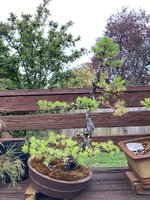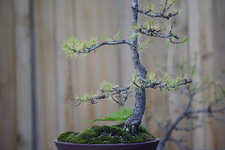lillarch
Sapling
This Western Larch has had a rough growing season. As icing on the cake I noticed one of the branch tips has a large number of what look like eggs (see photos below).
I have been trying to figure out why suddenly in mid June my larch trees started dropping needles. It was odd because the Seattle area didn’t see many days over 75 deg until late June. Conversely, we experienced an unseasonably warm late January-early February with many daily temperatures exceeding the historical average by 5-10 deg F. See photo below of larch buds moving from January 22nd! I unfortunately decided it was a good time to repot. Soon after in late February we experienced freezing temperatures again. It is my theory that this period of unseasonable warmth and repotting followed by freezing temperatures shocked the Larch trees and caused the problems I saw later in the spring and early summer and the pests I am seeing now.
1/22/22 Larch buds moving early after warm January
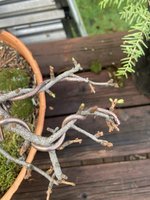
2/4/22 Mistake to repot. Fooled by warm temperatures in mid winter.
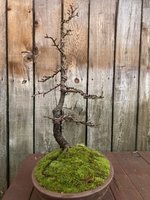
6/24/22 Weak new growth followed by needle drop. Apex lost less but still saw browning and dropping


9/16/22 unhealthy foliage with yellow tips and no vigorous growth

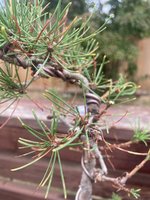

9/19/22 unknown pest

9/19/22 unknown pest eggs
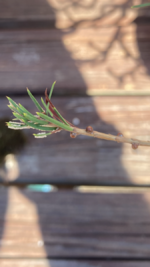
I have been trying to figure out why suddenly in mid June my larch trees started dropping needles. It was odd because the Seattle area didn’t see many days over 75 deg until late June. Conversely, we experienced an unseasonably warm late January-early February with many daily temperatures exceeding the historical average by 5-10 deg F. See photo below of larch buds moving from January 22nd! I unfortunately decided it was a good time to repot. Soon after in late February we experienced freezing temperatures again. It is my theory that this period of unseasonable warmth and repotting followed by freezing temperatures shocked the Larch trees and caused the problems I saw later in the spring and early summer and the pests I am seeing now.
1/22/22 Larch buds moving early after warm January

2/4/22 Mistake to repot. Fooled by warm temperatures in mid winter.

6/24/22 Weak new growth followed by needle drop. Apex lost less but still saw browning and dropping


9/16/22 unhealthy foliage with yellow tips and no vigorous growth



9/19/22 unknown pest

9/19/22 unknown pest eggs


